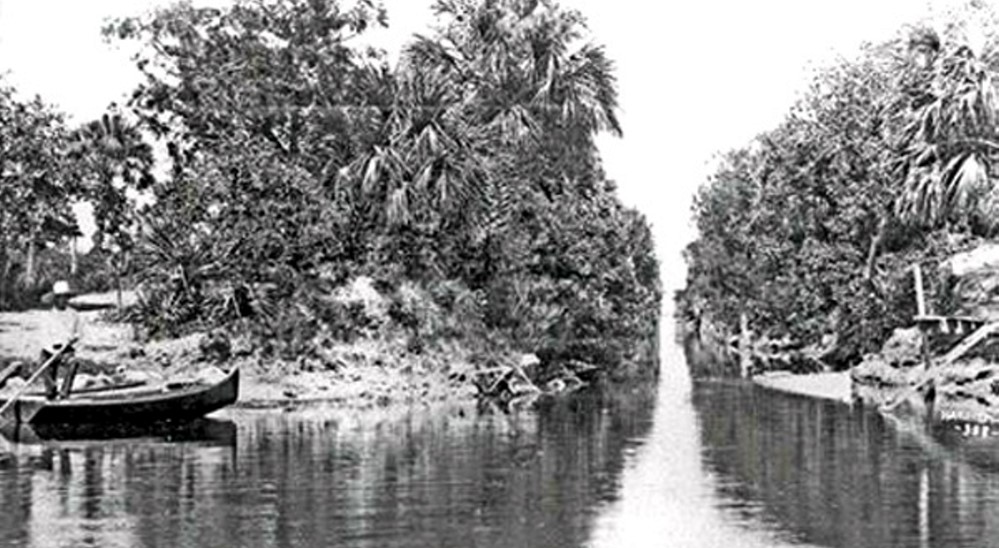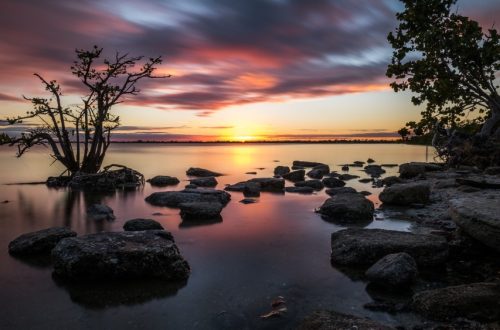History of Merritt Island
Merritt Island is an area located on Florida’s largest island, which it shares its name with. This island is situated on the eastern Floridian coast and is home to a rich history spanning several centuries. The history of Merritt Island is a reflection of both American progress and Florida’s unique past.
Prehistoric Times
Like much of the Florida region, Merritt Island was initially inhabited by Native American tribes. Evidence of their settlement dates back several thousand years. The tribes known to have inhabited this region were the Ais, or Ays, a tribe of Native Americans living in central coastal Florida, stretching from the St. Johns river to the Florida Keys.
European Colonization and the Spanish Period
In the 16th century, European explorers arrived on Florida’s shores. Spanish explorer Ponce de León is traditionally regarded as the first European to land in Florida. The Ais people had interactions with these Spanish explorers. One of the early European settlements was a Spanish mission, established in the late 17th century on Merritt Island.
In 1763, the Treaty of Paris ended the French and Indian War, transferring Florida from Spain to British control. During this period, Merritt Island saw agricultural development, particularly with sugar plantations. However, in 1783, Britain ceded Florida back to Spain following the American Revolutionary War.

Haulover Canal
The Haulover Canal is a manmade waterway located in Merritt Island, Florida. It serves as a vital link in the Indian River Lagoon, connecting the Mosquito Lagoon and the Indian River. Its origins date back to the 19th century and its creation represented an innovative solution to a problem that had long been a challenge for the local community.
The term “haulover” comes from the practice of hauling small boats over this narrow strip of land between the two bodies of water. Before the canal was constructed, this was a common practice as there was no direct water route between the Mosquito Lagoon and the Indian River. The trip was cumbersome and time-consuming and involved unloading the boat, physically hauling it over the land, then reloading it to continue the journey.
Construction and Early Use
The Haulover Canal was constructed in 1852, creating a direct water route between the two bodies of water. It was initially a shallow canal, only about 3 feet deep and 14 feet wide. Nonetheless, it significantly improved the transportation of goods and people around Merritt Island, encouraging the region’s economic development. It was particularly important for the booming citrus industry of the time, as it allowed for faster and more efficient transport of citrus crops.
The canal also played a role in military operations. During the Second Seminole War (1835-1842), it was used to transport military supplies.
Modern Development and Current Use
In the 20th century, the canal was widened and deepened to accommodate larger vessels. This was part of a larger project in the 1960s by the Army Corps of Engineers, which sought to improve navigation within the Indian River Lagoon system. This project included the construction of a new bridge and lock system to help control water levels and salinity.
Today, the Haulover Canal is part of the Intracoastal Waterway, an inland route for marine traffic that extends from Boston, Massachusetts, down around the southern tip of Florida and along the Gulf Coast to Texas.
The canal is also part of the Merritt Island National Wildlife Refuge and is popular with boaters, kayakers, and nature enthusiasts. One of its popular attractions is the opportunity to watch Atlantic bottlenose dolphins and West Indian manatees, who frequent the canal and surrounding waters.
The Haulover Canal is more than just a waterway; it’s a testament to human innovation and a key part of the historical, economic, and natural landscape of Merritt Island. It continues to serve as a hotspot for wildlife viewing. You can read more about the Haulover Canal here.
The American Period and Modern Times
In 1821, Spain sold Florida to the United States. Following this, Merritt Island continued to grow and develop, with more focus on agriculture, including the cultivation of citrus fruits, a product Florida is still famous for today.
The mid-19th century saw the Seminole Wars, which led to the removal of the Seminole Indians from the area. Merritt Island was officially named and recognized by the U.S. Postal Service in 1850.
Following the American Civil War, the late 19th and early 20th centuries brought a significant economic boom to the region, with the expansion of the citrus industry and the growth of commercial fishing.
The 20th century introduced a significant shift to Merritt Island’s primary use with the advent of the space age. NASA chose this area to be the site of the Kennedy Space Center in the 1960s. The area saw a surge in population and economic growth as it became central to the nation’s space exploration efforts.
Merritt Island is now home to a diverse population and serves as both a residential community and a hub for space exploration. The island has a unique blend of historical sites, natural beauty, and high-tech installations, which reflect its rich history. The story of Merritt Island is a narrative of progress, from the Native American tribes and Spanish explorers to citrus farmers and space scientists, highlighting the development of the American nation.


